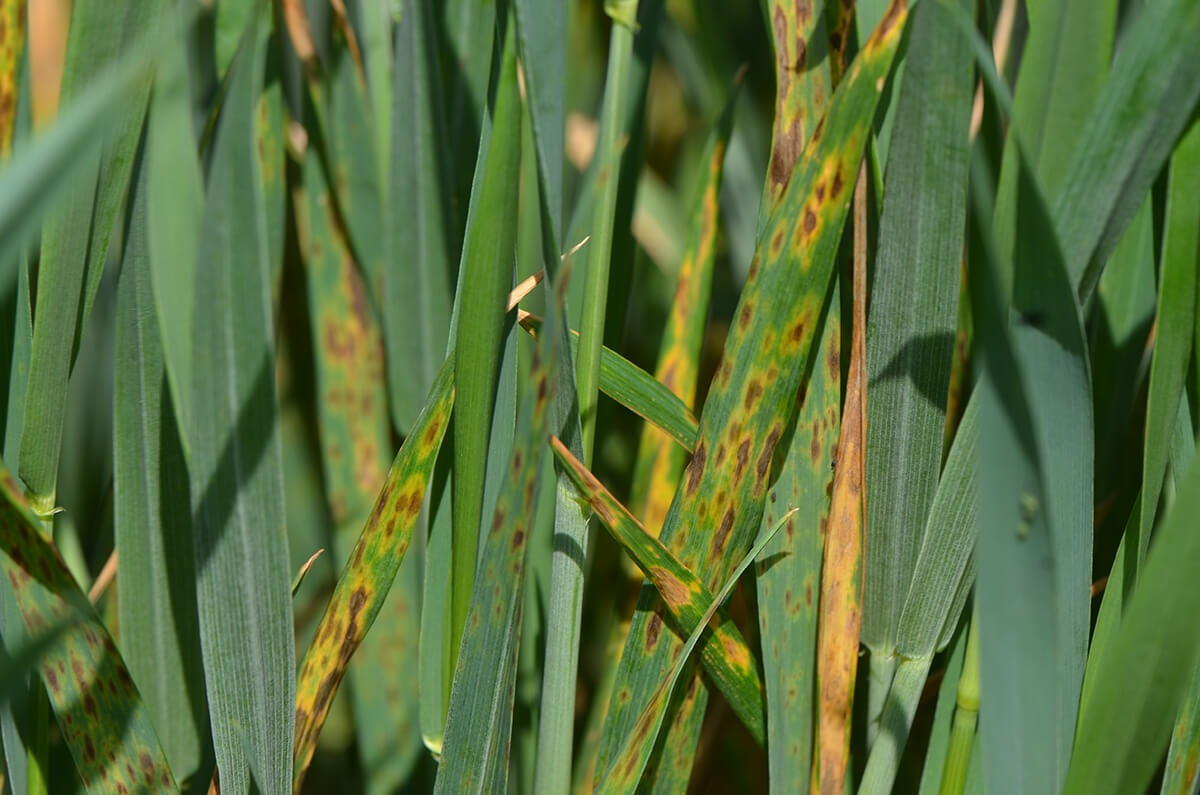
Tan spot, caused by the fungal pathogen Pyrenophora tritici-repentis, is a common foliar disease that poses a significant challenge to wheat farmers worldwide. The natural infestation of tan spot can lead to yield losses and decreased grain quality if left unchecked. In this article, we will explore effective strategies that farmers can employ to deal with the natural infestation of tan spot on their wheat crops. By understanding the disease, implementing preventive measures, and adopting appropriate management practices, farmers can minimize the impact of tan spot and protect their yields.
Understanding Tan Spot:
1.1. Symptoms and Identification:
- Familiarize yourself with the symptoms of tan spot, such as oval-shaped tan lesions with a yellow halo on the wheat leaves.
- Learn to differentiate tan spot from other wheat diseases to accurately diagnose the problem.
1.2. Disease Cycle and Favorable Conditions:
- Gain insights into the lifecycle of the tan spot pathogen and its dependence on environmental factors.
- Understand the conditions that promote the development and spread of tan spot, such as high humidity and moderate temperatures.
Prevention Strategies:
2.1. Crop Rotation:
- Implement a crop rotation strategy to break the disease cycle, reducing the buildup of inoculum in the soil.
- Avoid planting wheat in consecutive seasons and incorporate alternative crops like corn or soybeans into the rotation.
2.2. Resistant Varieties:
- Choose wheat varieties that possess resistance or tolerance to tan spot.
- Consult with local agricultural extension services or seed suppliers to identify suitable varieties for your region.
2.3. Seed Treatment:
- Consider using fungicide-treated seeds to provide initial protection against tan spot and other seedborne diseases.
- Follow recommended seed treatment practices and use fungicides registered for tan spot control.
Cultural and Management Practices:
3.1. Field Hygiene:
- Practice good field hygiene by removing crop debris and volunteer wheat plants, which can serve as sources of infection.
- Incorporate plant residue into the soil through tillage to accelerate decomposition and reduce pathogen survival.
3.2. Proper Irrigation:
- Avoid over-irrigation, as excessive moisture can create favorable conditions for tan spot development.
- Implement appropriate irrigation scheduling based on crop water requirements and soil moisture monitoring.
Chemical Control:
4.1. Fungicide Application:
- Consider fungicide application when tan spot reaches threshold levels or if the wheat variety is susceptible to severe infection.
- Consult local agricultural experts or extension services for fungicide recommendations, application timings, and rates.
4.2 Monitoring and Early Detection:
- Regularly scout your wheat fields for symptoms of tan spot.
- Adopt a systematic monitoring approach to identify disease development and take timely action.
4.3 Integrated Pest Management:
- Embrace an integrated pest management (IPM) approach that combines preventive measures, cultural practices, chemical control, and biological control.
- Customize your IPM strategy based on the specific conditions and challenges in your farming system.
Dealing with the natural infestation of tan spot on wheat requires a multifaceted approach that combines prevention, cultural practices, and, if necessary, chemical control. By understanding the disease, implementing preventive measures, and monitoring your fields closely, you can effectively manage tan spot and minimize its impact on your wheat crop. Stay informed, collaborate with local agricultural experts, and adapt your strategies to the specific conditions in your region. Together, we can combat the natural infestation of tan spot and safeguard our wheat crops for a productive and successful harvest.
Stay updated with the latest farming tips and agriculture industry news from Africa by subscribing to our newsletter. Don’t miss out on valuable insights and updates. Follow us on Twitter, LinkedIn, and Facebook to join our farming community and stay connected with us.




















Leave a Reply